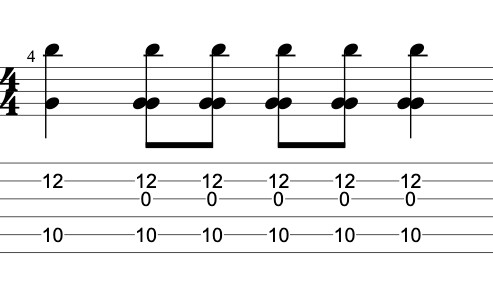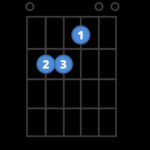“Blackbird,” a timeless masterpiece by The Beatles, resonates with guitarists of all levels. Its intricate fingerstyle arrangement and poignant melody often intimidate aspiring players. However, demystifying the chords and techniques reveals that “Blackbird” is more accessible than many perceive. This guide breaks down the essential elements, offering a comprehensive “Blackbird” on guitar chords lesson, enriched with insights and tips to master this iconic song.
The Enduring Story of “Blackbird”
Credited to Lennon-McCartney and penned primarily by Paul McCartney, “Blackbird” emerged on the 1968 White Album, quickly becoming a standout track. Beyond its musical beauty, the song carries layers of meaning. McCartney has often linked “Blackbird” to the civil rights movement in the 1960s, seeing the “blackbird” as a metaphor for the struggles faced by African Americans. This interpretation adds a profound depth to the song’s message of hope and perseverance.
Interestingly, McCartney also revealed a classical influence: Johann Sebastian Bach’s Bourrée in E minor. Both McCartney and George Harrison learned this piece in their youth, and the opening guitar motif of “Blackbird” subtly echoes Bach’s composition. This blend of classical inspiration with contemporary social commentary highlights McCartney’s genius as a songwriter.
Recorded solo by McCartney at Abbey Road Studios, “Blackbird” possesses an intimate and raw quality. The rhythmic tapping heard throughout the track is McCartney’s foot keeping time, adding to the song’s personal and almost live feel. Despite never being released as a single, “Blackbird” has achieved legendary status, consistently praised as one of McCartney’s finest works and included in Rolling Stone’s “The Beatles 100 Greatest Songs.” It remains a staple in McCartney’s live performances, showcasing its enduring appeal across generations.
Understanding the rich history and influences behind “Blackbird” enhances the appreciation and motivation to learn it on guitar. Let’s now delve into the practical aspects, starting with tuning.
Standard Tuning: Setting the Stage for “Blackbird”
While some live performances might feature “Blackbird” played in a lower tuning for convenience (especially when paired with “Yesterday”), the original recording and intended tuning is standard. This means your guitar strings should be tuned to:
- E (6th string – thickest)
- A (5th string)
- D (4th string)
- G (3rd string)
- B (2nd string)
- E (1st string – thinnest)
Standard tuning provides the authentic voicing and feel of “Blackbird,” allowing you to replicate the song as it was originally intended. With your guitar correctly tuned, we can explore the chords that make up this classic.
Unpacking the “Blackbird” Chords: Shapes and Simplicity
“Blackbird” employs a variety of chords, and while some might appear complex on paper with names like Am11 or Dadd11, the actual finger shapes are surprisingly manageable. The beauty of “Blackbird” lies in utilizing simple chord shapes that are moved around the fretboard, often requiring just one or two fingers. This shape-based approach makes the song less daunting and more intuitive to learn.
Let’s break down the essential “Blackbird” chords with diagrams and explanations to simplify your learning process. Notice how many of these chords utilize open strings, contributing to the song’s rich and resonant sound.
G: A foundational chord, played here in a folk style across all six strings.
Am11: Played on strings 5 through 2, this chord adds a melancholic flavor.
G/B: A smooth transition chord, often used as a “walk-up” in fingerstyle guitar.
C: A movable shape that will be shifted across the fretboard throughout the song.
A7/C#: Similar shape to G/B, but shifted higher up the neck.
Dadd11: The C shape moved up to the 5th fret position.
B7/D#: Following the pattern, another variation of the movable shape.
Em: A minor chord shape in the 7th fret position.
Eb: Simply lower the root note of the Em chord by one fret.
Cm: Resembling the G/B and Em shapes, now in the 3rd fret position.
A7add11: A single-finger chord shape for a unique voicing.
D7sus4: Move the fretted note from A7add11 down one fret.
These chords constitute the verse section of “Blackbird.” The chorus introduces three additional chords, continuing the pattern of simple shapes and fretboard movement.
Fadd9: Played in the 8th fret position, adding brightness to the chorus.
Dmadd11: In the 5th fret position, maintaining the movable shape concept.
Bb6: Played at the 1st fret, grounding the chorus progression.
By examining these chord diagrams, you’ll notice recurring shapes and patterns. “Blackbird” is fundamentally built upon moving a few core shapes across the fretboard, primarily based on the interval of a tenth (an octave plus a third). This pattern-based approach simplifies learning the chord progression significantly.
“Blackbird”: Challenging or Achievable on Guitar?
The perception of “Blackbird” as a difficult guitar piece is often overstated. When approached with the right methodology, it becomes surprisingly accessible, even for beginner guitarists. The key lies in shifting focus from complex chord names to the underlying simple shapes and the distinctive fingerpicking style.
Paul McCartney himself likely didn’t analyze these chords with intricate names. His approach was more intuitive, guided by ear and shape recognition. To play “Blackbird” effectively, concentrate on learning the basic chord grips—many requiring only one or two fingers—and mastering the clawhammer-style picking technique. These two elements combined are the core to unlocking the song’s magic. While in-depth harmonic analysis might be beneficial for soloing or ensemble playing, it’s not essential for creating a beautiful solo rendition.
Therefore, “Blackbird” can indeed be considered a beginner-friendly song when taught correctly. Avoid overly complicated interpretations and focus on the fundamental techniques to make rapid progress.
The Key of “Blackbird” and its Harmonic Nuances
“Blackbird” is primarily in the key of G major. However, McCartney masterfully incorporates chromatic chords and walking bass lines, adding color and sophistication that transcends a simple major key structure. These chromatic elements create harmonic interest and contribute to the song’s unique sound. While G major serves as the tonal center, the frequent use of chords outside the diatonic scale enriches the harmonic landscape.
Understanding the underlying key provides a framework, but appreciating the chromaticism is crucial for capturing the true essence of “Blackbird.”
Mastering the “Blackbird” Strumming Pattern: The Brush Technique
The rhythmic foundation of “Blackbird” is an 8th-note brushing pattern. Think of it as a strumming pattern executed with your fingers, creating a delicate and percussive texture. 8th notes divide each beat in a 4/4 time signature into two equal parts. Counting 8th notes involves using the “1 & 2 & 3 & 4 &” rhythm, where the numbers are on the beat and the “&” symbols are off-beats.
While an even 8th-note feel is the basis, varying the rhythm by incorporating quarter notes or slightly syncopated patterns adds nuance and prevents it from sounding too rigid. Experiment with mixing quarter notes and 8th notes to create a more dynamic and musical feel.
Here’s a simplified example of the brushing pattern in tablature:
 Blackbird brushing pattern guitar tab
Blackbird brushing pattern guitar tab
Practice this brushing pattern slowly, focusing on evenness and control. As you become comfortable, gradually increase the tempo and experiment with rhythmic variations to personalize your performance.
Tips for Learning “Blackbird” Guitar Chords Effectively
- Focus on Shapes, Not Names: Prioritize learning the finger shapes and how they move across the fretboard rather than memorizing complex chord names initially.
- Start Slowly: Begin practicing chords and transitions at a slow tempo, gradually increasing speed as accuracy improves.
- Listen Intently: Listen to “Blackbird” repeatedly, paying close attention to the guitar part and internalizing the rhythm and feel.
- Break it Down: Practice in sections, mastering the verse chords and progression before moving to the chorus.
- Use Chord Diagrams: Utilize chord diagrams as visual aids to ensure correct finger placement and shapes.
- Practice Regularly: Consistent, short practice sessions are more effective than infrequent, long ones.
Conclusion: Unleash Your Inner “Blackbird” Guitarist
“Blackbird” stands as a testament to songwriting brilliance, blending simplicity with profound musicality. For guitarists, it offers an accessible yet rewarding challenge. By understanding the underlying chord shapes, mastering the brushing technique, and focusing on musicality over complexity, you can unlock the beauty of “Blackbird” on guitar.
Embrace the journey of learning this iconic song. With patience and the right approach, you’ll be playing “Blackbird” and captivating listeners with its timeless charm.
Ready to accelerate your guitar journey? Explore more lessons and resources to deepen your fretboard knowledge and song learning skills!

